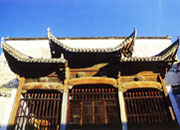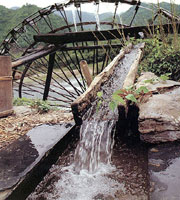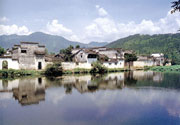Source:
01-13-2006 16:34

Located in southern Anhui, the villages of Xidi and Hongcun are graphic illustrations of a unique type of human settlement created 500 years ago. In their buildings and their street patterns, the two villages reflect the socio-economic structure of a long stable period in Chinese history. The traditional non-urban settlements of China, which have to a very large extent disappeared during the past century, are exceptionally well preserved here. About 1600 years ago, Tao Yuanming, the poet laureate of Jin Dynasty wrote "the story of the peach blossom valley". For a long time, people thought the picturesque villages of Xidi and Hongcun might be the prototype for Tao Yuanming's legendary utopia of ancient China.

The two traditional villages of Xidi and Hongcun preserve to a remarkable extent the rustic appearance of Chinese villages that had largely disappeared or were transformed during the last century. Their street plans, architecture and decoration, and the integration of houses with comprehensive water systems are unique surviving examples. Who were these people who had built this heaven on earth? According to our research, most of them were refugees from war.
The variant architectural styles in Huizhou lent a kaleidoscopic view into the cultural fabric of the locality. Besides indicating social status and wealth, the buildings also tell us of the awe and respect traditional Chinese people felt towards their ancestors. This filial piety is a testimony to the Confucian mode of thought, also shown in the large number of grand ancestral halls. There are also many arches constructed to honor ancestors, officials, successful candidates for the imperial exams and chaste women.

Reputed as "A Living Ancient Residential Museum", the ancient villages of Xidi and Hongcun were added to UNESCO's list of World Cultural Heritage sites in 2000. How do people evaluate the ancient villages in Southern Anhui? Their UNESCO listing recognizes the villages' worth as a gateway to the past, and architects refer to them as a living Museum of the Ming and Qing Dynasties. Visitors see them as the most beautiful county on earth; photographers as the villages of traditional Chinese paintings. For the locals, it is just home in paradise.
Editor:Wang Ping
